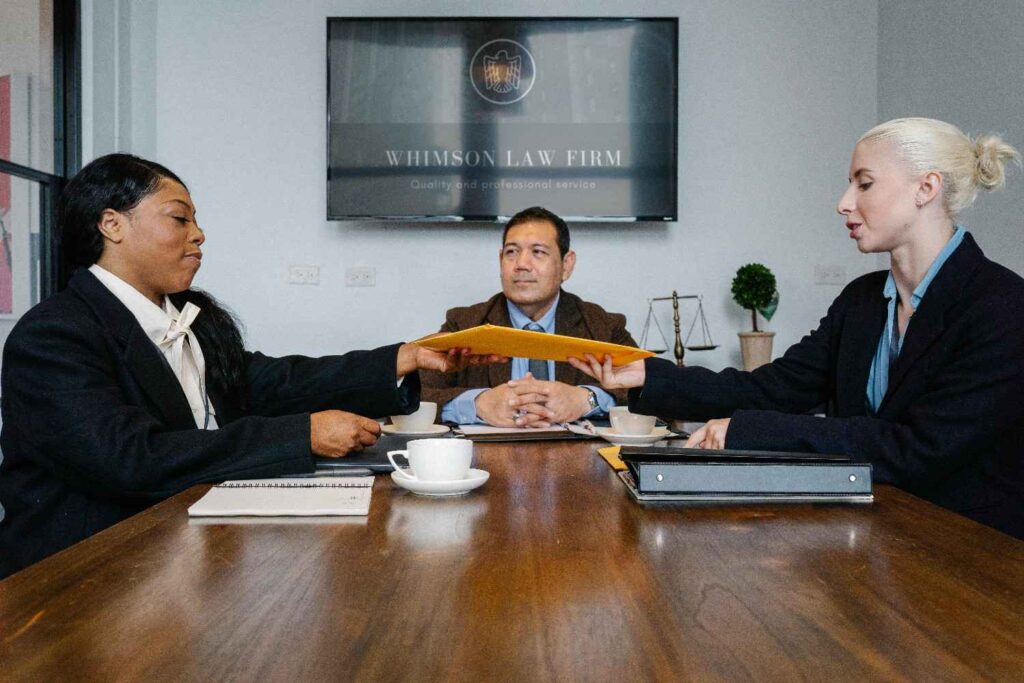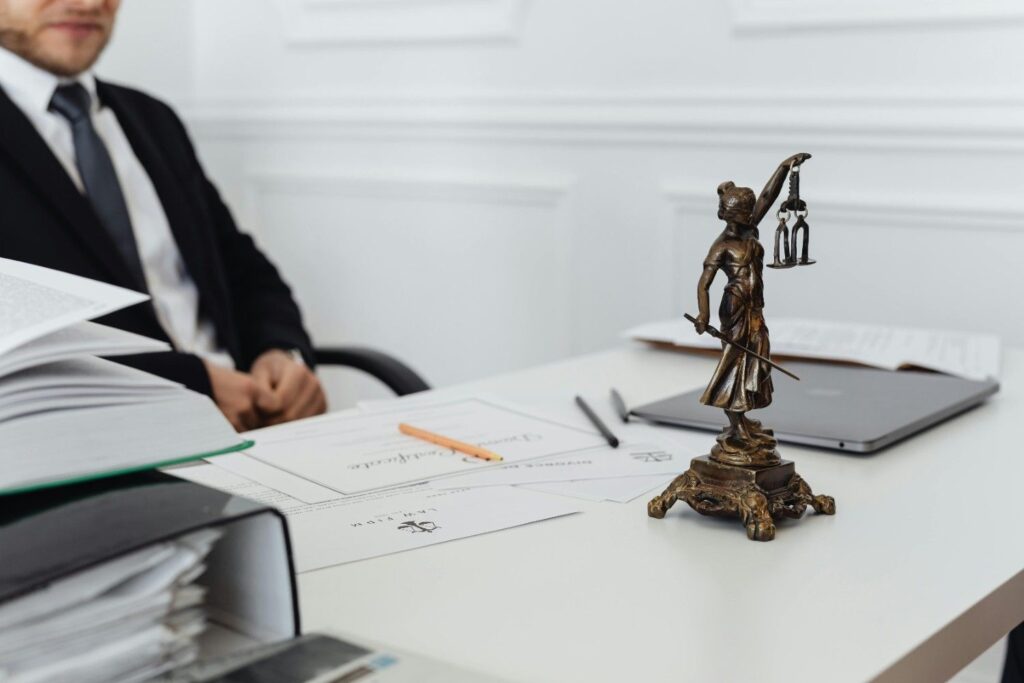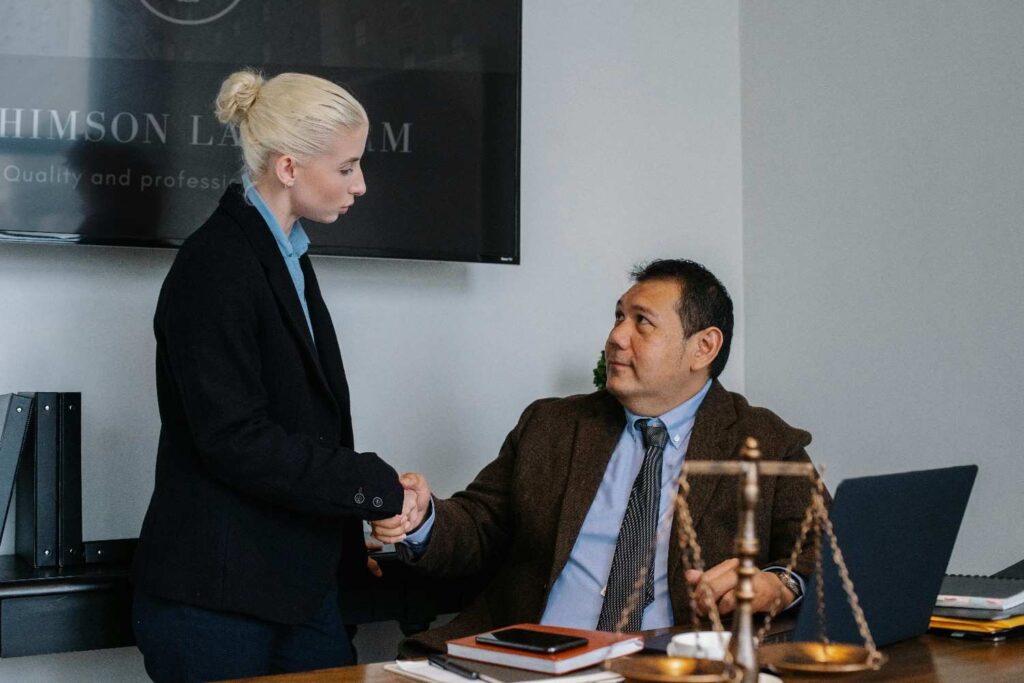In the last few years, artificial intelligence has quietly moved into the heart of patent law. Search tools, prior art analysis, claim drafting—many of the steps that once relied purely on human skill are now powered, or at least assisted, by algorithms. This shift is helping attorneys work faster, handle more data, and make decisions that would be impossible under manual review alone.
Why AI Is Becoming a Key Player in Patent Law
Artificial intelligence has moved far beyond being a novelty in the patent field. It’s no longer just about automating a few routine tasks. It’s now a powerful engine driving research, drafting, analytics, and even decision-making strategies for patent portfolios.
For many law firms and in-house counsel teams, AI is quickly becoming a core part of daily operations. This shift is happening because patent work is both data-heavy and time-sensitive—two areas where AI naturally excels.
At its heart, AI is being embraced because it gives attorneys the ability to process information at a scale and speed that a human team simply cannot match.
Patent databases hold millions of documents, many in different languages, and each with subtle technical details that can make or break a case. Traditional manual review is slow and expensive.
AI, when trained well, can scan, compare, and extract relevant points in a fraction of the time. That speed isn’t just about efficiency—it opens the door to deeper analysis that was previously impractical.
The real driver: competitive advantage
In the business world, every delay in filing or defending a patent is a potential loss in market share. Companies today are not just racing against competitors; they are racing against global players, new market entrants, and shifting technologies.
AI helps legal teams keep pace. By turning weeks of research into hours, attorneys can advise faster, file sooner, and respond to challenges with a precision that impresses clients and deters competitors.
When a company knows that its legal team can spot emerging risks early and move quickly to secure rights, that confidence feeds into other business strategies—product launches, licensing deals, investor pitches.
The integration of AI into patent workflows isn’t just about doing the same job faster; it’s about reshaping how quickly and strategically a business can move in its industry.
The caution that comes with speed
However, with this advantage comes risk. The faster you move, the easier it becomes to overlook the quiet influence of bias in the AI systems you trust.
A search tool that tends to over-prioritize certain jurisdictions, a drafting algorithm that subtly mirrors older claim language patterns, or an analytics dashboard that misjudges examiner tendencies—all of these can lead to legal advice that seems sound but is actually incomplete.
The best way to guard against this is to pair AI’s speed with human oversight that questions, verifies, and cross-checks results before decisions are made.
Attorneys and in-house teams should be deliberate about tracking not just the outcomes AI delivers, but the pathways it takes to get there.
That means reviewing the datasets your tools are trained on, checking whether your search results consistently surface certain types of prior art over others, and testing your drafting tools on diverse case examples.
The aim is not to distrust the technology, but to keep it working in alignment with your legal goals.
Turning AI into a trusted partner
For businesses, the key is to treat AI not as a replacement for attorney judgment but as an amplifier of it.
The firms and corporate IP departments that will see the greatest gains are those that combine AI’s ability to scan, analyze, and predict with the nuanced judgment of experienced professionals.
This is where the strategic edge lies—knowing when to trust the machine’s recommendations, when to challenge them, and how to use them to create stronger, faster, and more defensible patents.
When used with intention and scrutiny, AI can be one of the most valuable allies a business has in protecting innovation. But it requires attorneys to stay deeply involved, guiding the technology rather than letting it quietly steer the strategy.
How AI Bias Starts—And Why It’s Hard to See
Bias in AI doesn’t usually show up as an obvious flaw. It’s not as if a search tool will openly say it is ignoring certain inventions or jurisdictions. Instead, bias is baked into the way an AI system learns, the data it trains on, and the assumptions built into its design.
This makes it especially dangerous in patent law, where a single missed piece of prior art or a misinterpreted claim can change the direction of a case.
Many AI systems used in the legal field are trained on historical patent records, court decisions, and examiner behavior data.
If those historical datasets reflect uneven representation—perhaps certain technologies, regions, or inventors were historically under-patented—then the AI inherits those imbalances.
The danger is that the system doesn’t just reflect the past; it can unintentionally reinforce it.
The subtle ways bias slips into the process
One of the most common sources of bias comes from how data is labeled and categorized. In patent law, classification codes, keyword tagging, and jurisdictional indexing all play a role in how AI organizes and retrieves information.
If these labels are applied inconsistently or based on outdated technical language, the AI may overemphasize certain results while pushing others into the background.

Attorneys relying on these outputs might not realize the system is filtering the universe of possibilities before they even see it.
Another subtle source is the training objective itself. AI tools are often designed to prioritize “relevance” or “similarity,” but these concepts are defined by the parameters chosen by the developers.
A system that ranks relevance based on language patterns may surface patents that read similarly but are less technically relevant, while missing those with different wording but higher substantive overlap.
In fast-moving fields like biotech, software, or green tech, that gap can be costly.
Why detection is challenging for attorneys and businesses
Bias is difficult to spot because AI delivers its results with confidence.
Search rankings, statistical predictions, and similarity scores come across as objective facts, but they are in reality the product of many hidden choices—what data was included, how it was cleaned, what algorithms were used, and which metrics were prioritized.
Unless attorneys are actively probing these systems, bias can live quietly inside them, shaping decisions without any outward sign of error.
For businesses, the risk is compounded by the fact that decisions made under biased AI influence often appear reasonable at the time.
If a tool consistently misses prior art from smaller jurisdictions, the omissions might only come to light years later—perhaps during litigation or when a competitor files a challenge.
By then, the cost of correcting the oversight is far higher than the cost of detecting it early.
Building a proactive defense against AI bias
To guard against bias, the focus should be on creating a culture of validation. This means attorneys and in-house IP teams need to actively compare AI outputs against human review, especially in high-stakes matters.
When possible, run parallel searches using different tools or methodologies to see if the same results emerge. If significant differences appear, dig deeper into why.
It also pays to understand the origin of your AI tools’ datasets. Ask vendors for transparency on training data sources and update schedules. Insist on knowing how they handle outdated records, translation errors, and underrepresented technical fields.
For companies with the resources, consider creating internal benchmarks—sets of known patents and prior art—that can be used to test whether a tool consistently surfaces critical information.
When bias is caught early, it can be corrected through better data, fine-tuned search parameters, or supplemental human oversight. The point is to keep AI in a supporting role, ensuring it strengthens your strategy rather than quietly distorting it.
The Hidden Impact of Bias in Prior Art Searches
Prior art searches are the backbone of patent strategy. They determine whether an invention is new, how strong a claim can be, and where potential risks lie.
When AI is used to perform these searches, the promise is clear: faster results, broader coverage, and deeper insights. But when bias slips into this process, the damage is often invisible until it is too late.
AI-driven search tools depend heavily on how prior art is indexed and retrieved. If the system’s training data overrepresents certain patent offices, languages, or technical fields, the results can lean toward those familiar territories while missing key disclosures elsewhere.
In global markets, that gap can be fatal to a patent’s enforceability. The risk is amplified for companies working in cross-disciplinary fields, where relevant prior art may come from unexpected industries or regions.
When the search feels complete but isn’t
The most dangerous outcome of bias in prior art searches is the illusion of completeness. Attorneys may review a set of AI-generated results, see dozens or hundreds of references, and feel confident that the field has been covered thoroughly.
In reality, the system may have systematically excluded entire categories of prior art—such as non-patent literature, foreign filings in less common languages, or patents classified under unconventional codes.
The output looks robust, but it is silently shaped by the AI’s blind spots.
This false sense of certainty can lead businesses to make aggressive moves based on incomplete information. They may file patents that are later challenged successfully, invest heavily in product lines that face unexpected infringement risks, or enter licensing negotiations from a weaker position than they believed.
The long-term cost is not just in legal fees but in lost market leverage and damaged credibility with partners or investors.
Reducing bias through deliberate search strategies
One way to counteract bias in AI-driven prior art searches is to blend automated tools with intentional human direction. Instead of relying solely on default settings, attorneys should actively guide the search by experimenting with different keyword sets, technical classifications, and jurisdiction filters.
A well-structured manual search alongside the AI-generated one can expose gaps and inconsistencies.
Businesses can also benefit from adopting a layered search process. Start with the AI’s broad sweep, then run targeted searches for areas that are historically underrepresented in automated tools.
This could mean focusing on certain countries, digging into academic papers, or reviewing older patents that may have been poorly digitized and are less visible to machine learning systems.
Another valuable tactic is to track the overlap between AI results and human-curated datasets from past projects. If certain sources consistently fail to appear in AI searches but are known to be relevant, that is a clear sign the tool’s coverage is uneven.
Over time, this kind of internal tracking can help refine both the AI’s settings and the team’s trust in its outputs.
Treating prior art search as a living process
Perhaps the most important mindset shift is to stop treating prior art search as a single event and start viewing it as an evolving process. In fast-moving sectors, new disclosures and missed records can surface months or even years after a filing.
AI tools should be set up to re-run searches periodically, with parameters adjusted to account for emerging fields and changing classification practices.
When businesses treat prior art search as ongoing surveillance rather than a one-time hurdle, they reduce the risk that bias will silently undermine their position.

This ongoing attention also keeps attorneys alert to how the AI behaves over time, making it easier to catch subtle drifts in the system’s performance.
When Claim Drafting Tools Miss the Mark
AI-assisted claim drafting tools promise speed, consistency, and a head start in shaping strong patent applications. For busy attorneys and fast-moving businesses, that promise is tempting.
A well-trained algorithm can analyze similar patents, suggest wording, and structure claims in ways that align with examiner preferences. On paper, this is a win.
But in practice, these tools are only as sharp as the data and logic that power them, and bias can creep in quietly.
Many drafting tools are trained on large pools of granted patents. That means they learn patterns from what has already been approved, rather than what might be innovative today.
This historical skew can cause the AI to favor language, structures, and claim strategies that reflect yesterday’s norms.
If certain industries, inventors, or jurisdictions have historically been underrepresented in granted patents, their approaches may be missing from the AI’s learning—and therefore from the drafts it produces.
The hidden narrowing of innovation scope
Bias in claim drafting tools can subtly limit the scope of protection. For instance, if the AI leans heavily on precedent from one jurisdiction, it may default to narrower claims that fit that jurisdiction’s standards but leave gaps in global protection.
Similarly, if the algorithm consistently mirrors language from high-volume industries like electronics or pharmaceuticals, it may unintentionally frame claims in a way that doesn’t fully fit other technical areas.
This narrowing is often invisible until a competitor designs around the claims with ease, or until an examiner from another jurisdiction challenges the language as too vague or too specific.
In both cases, the cost to revise and refile is far greater than the cost of catching the issue at the start.
The need for intentional human shaping
For businesses relying on AI drafting, the safest strategy is to treat the AI’s output as a raw starting point, not a final product.
Attorneys should actively challenge the AI’s choices—question why certain phrases appear, why some claim elements are emphasized over others, and whether alternative structures might offer broader or more defensible protection.
It’s also critical to feed the AI diverse examples. If possible, include winning patents from multiple jurisdictions and industries that align with the business’s innovation strategy.
This helps counterbalance any bias in the public datasets the AI was trained on. Over time, a more balanced input set can produce drafts that reflect a wider and more flexible range of approaches.
Protecting the business beyond the first draft
Claim drafting is not just about securing a grant—it’s about securing rights that stand up under scrutiny years later, in different legal and market contexts.
If AI bias narrows a claim too much or relies on outdated conventions, a business may find that the protection it thought it had is far weaker than expected.
By staying actively involved in shaping and refining AI-generated claims, attorneys and their clients can keep the technology working in their favor without falling into the trap of uncritical trust.
Bias in Patent Examination Predictions and Analytics
Patent examination prediction tools are designed to forecast how an examiner might respond to a filing. They analyze years of historical examiner behavior, office actions, and grant rates to estimate the likelihood of success or identify potential roadblocks.
For businesses and attorneys, these insights can shape filing strategies, budgeting, and even negotiation approaches. When the predictions are accurate, they can save months of uncertainty and thousands in legal costs.
But when bias is baked into the analytics, it can quietly distort decisions in ways that only become obvious when it’s too late.
These systems rely on patterns in past examination data. If those patterns reflect historical biases—such as examiners in certain art units being more favorable to specific industries or applicant types—the predictions will mirror and reinforce those biases.

This can cause attorneys to overestimate the difficulty of certain filings or underestimate the risk of others. In high-stakes cases, that kind of skew can change whether a company chooses to pursue protection at all.
When numbers hide more than they reveal
The danger with biased analytics is that they present themselves as objective facts. A prediction tool might show that a certain examiner has a 70 percent allowance rate for similar cases.
On the surface, that’s a compelling piece of data. But if the AI’s definition of “similar” is based on narrow or biased criteria—such as overly focusing on keyword matches or ignoring relevant but less common classifications—the statistic loses its meaning.
Decisions made on that flawed premise can set a filing strategy on the wrong course from the start.
Bias can also creep in through the way the analytics tool handles missing or incomplete data. If older cases are underrepresented, if foreign office actions are excluded, or if non-patent literature is ignored in building the examiner profile, the prediction may rest on a shallow foundation.
For businesses counting on these tools to allocate resources and timing, that gap can lead to costly missteps.
Using predictions as a guide, not a verdict
The safest way to work with AI-powered examination predictions is to treat them as one voice in the room, not the final word.
Attorneys should compare the AI’s forecast with their own case-specific analysis, considering factors the algorithm might not fully account for—such as recent shifts in examiner assignments, changes in technology classification, or evolving case law.
For businesses, it’s smart to pair predictive analytics with scenario planning. If the tool predicts a difficult path to allowance, ask what adjustments could change that outcome.
This might involve rephrasing claims, adding supporting documentation, or filing in parallel jurisdictions with different standards. The aim is to use the AI’s forecast as a starting point for creative problem-solving, rather than a reason to retreat.
Building long-term resilience in strategy
Relying too heavily on biased predictions can cause a business to become risk-averse in areas where it might actually have strong potential. Over time, this can narrow the scope of innovation and create blind spots in the company’s intellectual property portfolio.
By balancing AI insights with human judgment, and by revisiting analytics regularly as the data evolves, businesses can keep their patent strategies resilient and forward-looking.
Practical Ways Attorneys Can Detect and Reduce AI Bias
Addressing AI bias in patent law is not about abandoning the technology—it’s about staying in control of it. AI can process more information than any human team could, but it cannot think strategically or anticipate the broader business consequences of a flawed decision.
That responsibility still belongs to attorneys and the companies they represent. Detecting and reducing bias requires an active, deliberate approach, where every AI-assisted step is tested, verified, and put into context before it shapes a legal or business decision.
One of the first moves attorneys can make is to understand exactly how their AI tools work. This doesn’t mean learning the algorithms line by line, but it does mean asking tough questions of vendors.
Where is the training data from? How often is it updated? Does it include diverse jurisdictions, industries, and languages?
If the answers are vague, that’s a signal that deeper investigation is needed before relying heavily on the system’s outputs.
Testing outputs before trusting them
Bias often hides in the results, not the process. Attorneys can detect this by running controlled tests. For example, take a set of known patents or prior art that should appear in a search, and see whether the AI retrieves them.
If it misses a significant portion, look for patterns—are they from specific regions, written in certain styles, or filed in niche classifications? Identifying these gaps early can prevent costly oversights later.
This same principle applies to predictive analytics and drafting tools. By running hypothetical or historical cases through the system and comparing the AI’s recommendations with known outcomes, attorneys can spot where the AI’s assumptions are leading it astray.

Once identified, those biases can be mitigated through parameter adjustments, supplemental manual searches, or cross-checks with alternative tools.
Embedding bias checks into workflow
Bias prevention works best when it is built into the standard workflow, not treated as a special step. For businesses, this might mean requiring a manual verification step for every high-stakes search, or having multiple team members review AI-generated drafts before submission.
Over time, these safeguards become routine, ensuring that the technology supports decisions without silently steering them.
The same approach can apply at the portfolio management level. Periodically reviewing past filings, office actions, and litigation results can reveal whether AI-assisted processes have introduced patterns—such as consistently narrower claims or underrepresentation in certain jurisdictions—that could signal bias.
Once spotted, those patterns can be corrected before they erode the company’s broader IP position.
Turning vigilance into competitive advantage
While bias in AI is often discussed as a risk, managing it well can actually be a source of competitive strength.
Companies that combine the reach of AI with disciplined oversight can act faster than rivals without sacrificing quality. They can make bold moves knowing their filings are not only timely but also thoroughly vetted against hidden blind spots.
For attorneys, building a reputation for being able to harness AI while avoiding its pitfalls can become a powerful differentiator in the market. Clients want speed, but they also want safety—and the firms that deliver both will stand out.
The Future of AI in Patents—And How to Stay Ahead
AI’s role in patent law is only going to grow. The tools we see today—search engines, drafting assistants, predictive analytics—are just the first wave. The next generation will be more integrated, more predictive, and more autonomous.
They will not just support specific steps in the patent process but shape entire strategies from invention disclosure to global portfolio management.
For businesses and attorneys, that means the ability to move faster and protect more ground. It also means the need for sharper oversight and a deeper understanding of how these systems work.
The future will not be about whether to use AI, but how to use it better than competitors. The firms and companies that succeed will be those that treat AI as a strategic partner, not a magic answer.
They will actively train, monitor, and refine their tools, ensuring that the insights generated are not only fast but also fair, accurate, and aligned with long-term goals.
Preparing for AI that learns in real time
One major shift on the horizon is the move toward real-time learning systems. These tools will not just rely on historical data; they will constantly update their models based on new filings, examiner behaviors, and market trends.
That can give a competitive edge—but it can also introduce bias more quickly if the incoming data is skewed. Attorneys will need processes in place to monitor these updates, ensuring that fresh data does not introduce fresh blind spots.
For businesses, this means investing in teams and workflows that can respond to AI insights quickly while still applying human judgment.
The faster AI moves, the more important it becomes to have a human layer that understands when to challenge, confirm, or adjust the recommendations.
Staying ahead through transparency and customization
The most effective future AI strategies will be built on transparency. This involves selecting tools from vendors that clearly disclose their data sources, update cycles, and algorithmic priorities.
Businesses should favor platforms that allow customization—tuning search parameters, adjusting predictive models, and adding proprietary data to the mix. The ability to shape the AI’s inputs and priorities will become a key differentiator in maintaining accuracy and reducing bias.
Custom training will also become a competitive advantage. Companies that feed their AI systems with their own case histories, product data, and industry-specific examples will create tools that are better tuned to their needs than any off-the-shelf solution.

This kind of tailored AI is not only more effective but also less likely to repeat the generic biases found in broader public datasets.
Building a culture that keeps AI in check
No matter how advanced AI becomes, the ultimate safeguard will be the culture within the law firm or corporate legal team. Teams that value scrutiny, encourage questioning of AI outputs, and reward thoroughness will consistently outperform those that treat AI recommendations as unquestionable.
Over time, this culture creates a compounding advantage—faster wins, fewer costly mistakes, and a reputation for both innovation and reliability.
The businesses and attorneys that thrive in the AI-driven patent landscape will be those that embrace the speed and scale of technology without surrendering control.
AI will keep changing, but the principles that make it valuable—transparency, oversight, and strategic use—will remain constant. The sooner these principles are embedded into daily practice, the stronger the long-term position will be.
Wrapping it up
AI has become an essential force in patent law, transforming how searches, drafting, analytics, and strategy come together. It offers incredible advantages—speed, reach, and the ability to process information at a scale no human team could match. But with that power comes risk. Bias in AI is not always obvious, and in the high-stakes world of patents, even small distortions in search results, claim language, or examiner predictions can have outsized consequences.

Leave a Reply